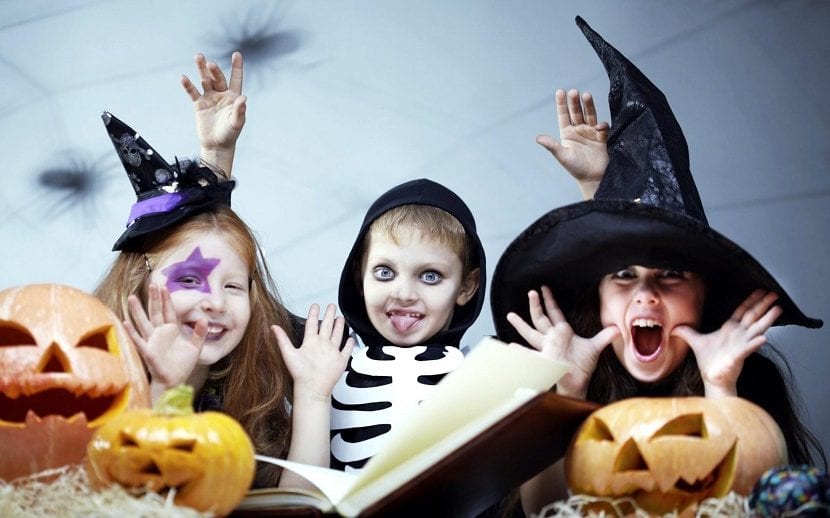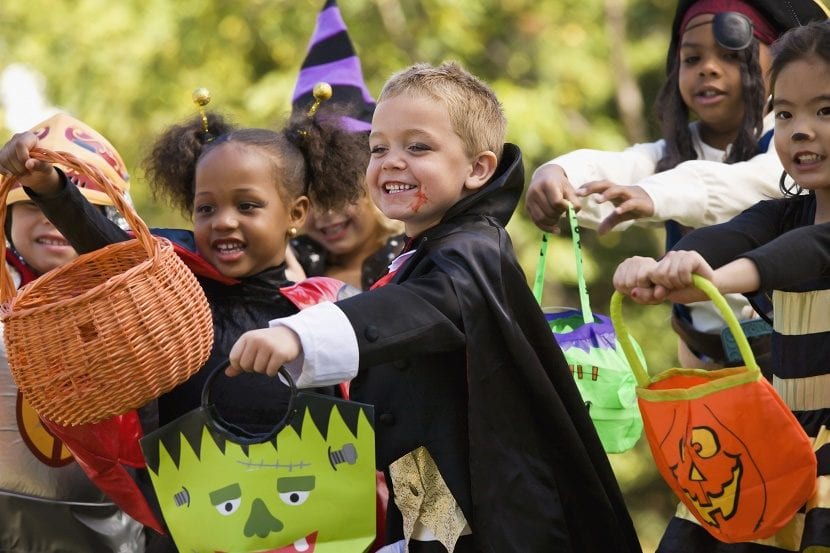
In our society and for not many years, the Halloween party is celebrated both in schools and in many homes. Even children go out alone to ask for candy and trinkets while dressing up as terrifying characters, it's the classic 'trick or treat' that you will surely remember from American and English films and that in our society it has been implanted with force.
It is a party that both adults and children love and that brings them a lot of fun, perhaps that is why we want to enjoy this party so terrifying and at the same time, so joyful. Below from Madres Hoy We want to talk to you about some curious details that you can tell your children so that they understand a little better why we celebrate Halloween and what this holiday really means.
In this way, on Halloween night or days before you can gather your children and their friends to tell these stories around a terrifying snack. A) Yes, They will be able to understand what Halloween is, its origin and they will feel even more united to this holiday. by also understanding the meaning and origin of some elements. Find the most suitable moment for you to explain these fun facts to the children, and enjoy their attention face!
It is a combination of several different celebrations
Halloween is a combination of several different celebrations from various cultures and religions at different times in history. The ancient Celts celebrated Samhain, which marks the end of the harvest season and a time when the boundary between the worlds of the living and the dead was blurred and ghosts visited the land. After the Roman Empire conquered the Celtic peoples, their Feralia festivals, on the last day of October, was when the Romans honored the passing of the dead, and it was a day in honor of Pomona, the Roman goddess of fruit and vegetables. trees, which were combined with Samhain.

November 1 is the Catholic feast of All Saints Day and the All Saints Mass is celebrated, the celebration of all who have gone to heaven and which also contributes to the history of Halloween. All Saints' Day is celebrated the day after October 31 and also honors all who have died but have not yet reached heaven.
Disguising was the way to hide from ghosts
The tradition originated in the Celtic culture but continued throughout Europe as well, and is that to hide from the spirits that returned to earth at this time of year, it was necessary to wear masks when leaving the houses at night so that the ghosts they thought they were also spirits. So that the ghosts did not enter their houses, plates of food were placed outside their homes as offerings to keep them happy -Trick or Treating?-.
Pumpkins were originally carved from turnips
In traditional Celtic history, a man named Jack tricked the devil and died at his hands for treason, furthermore the Devil made him wander at night with only a small lit torch to light the way. Jack put the small torch on a carved turnip and so the inside of the turnip lit up. So the Irish and Scots began to carve their own versions of the turnip from Jack's story with terrified faces and put them near windows or on doors to scare away evil spirits. When immigrants brought the tradition to America, the native pumpkin was easier to carve than turnips and also to obtain, and that is why today pumpkins are carved and candles are put inside so that they light up.

The history of Halloween includes a great deal of romance
Not everything is fear and terror in the story of Halloween, there is also a place for romance and love. Scottish girls hung wet sheets in front of a bonfire on the holidays so they could see the images of the future husband they would have.
The young women also peeled apples at midnight and pulled the strip of the first peel back over their shoulders. The strip of peel that fell to the ground was shaped like the first letter of her future husband's name.
In colonial America, apples were also used to predict the future on Halloween. The first person to pick an apple without using their hands would be the first to marry. People also used them to bake Halloween apple cakes with a ring and a thimble inside. Whoever found the ring would marry the following year, and the thimble was an indication of bad luck in love.

Orange makes perfect sense on Halloween
The color orange is quite common in autumn and you may think that that is why it is the most striking color on Halloween along with black, but it has to do much more than the season of the year in which this party is celebrated. Orange is a symbol of strength and endurance, while black is usually the color of death. The Celts were the first to use this color combination to gain strength throughout the winter and to be able to celebrate their Samhain festival with these colors so symbolic for them.
Cats were also part of these celebrations
During the ancient Celtic festival of Samhain, priests used cats as part of a ritual to try to predict the future. Therefore, in Halloween decorations you will not only find skulls, monsters, ghosts, undead, witches ... you will also find cats because they are part of Halloween history.
These are some of the curious facts that you can tell your children on Halloween night, This way they will understand much better this party that little by little has also been implanted in our society.
What curiosities! Some things I knew and others I did not 😉, I have always liked going to the origin of the celebrations, and transmit it to my children, so that they do not remain in the superficiality of consumerism.
Thank you.